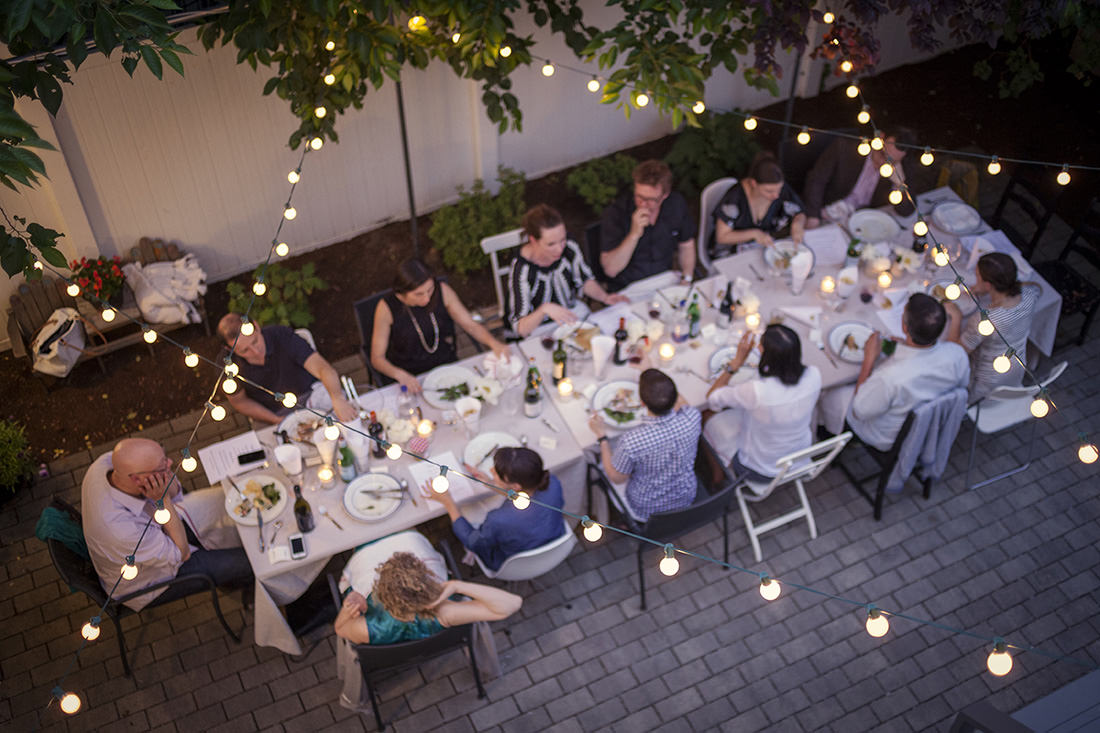
Hygge: Slowing Down The Scandinavian Way
Winters in Scandinavia are long and cold. It’s dark outside for much of the day. To save their spirits from winter depression, the Scandinavians have honed the art of illuminating their hearts and houses for centuries. They’ve cultivated hygge. The word hygge itself originated from the Norwegian language, where it means “coziness” or “wellbeing.”
In England, the rest of Europe and the United States hygge has become an overhyped trend. Now widely branded as the Danish concept of coziness, hygge sells… everything from fur blankets to spendy candles and cashmere sweaters. And coffee-table books. And lifestyle magazines.
And, “Hygge is catnip to social media,” writes Charlotte Higgins in her long read “The hygge conspiracy” in The Guardian.
Grasping the idea of hygge
Hygge is being in and enjoying the moment, the mindful acknowledgement and gratitude of the simple pleasures of life — the food, friends, the conversation, music, even the air. Hygge lies not in buying the prettiest candle at your favorite design store. Hygge is appreciating the beautiful warm glow of candlelight on a dark night
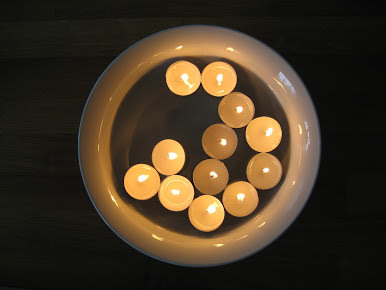
Hygge is appreciating the beautiful warm glow of candlelight on a dark night.
Being hyggelig means being kind, caring and welcoming; with yourself, with the people around you, with the world.
We sat down with our firm’s co-founder, architect Mette Aamodt, to talk about what hygge means to her personally, how she creates hygge moments for herself and her loved ones, and how you can manifest the feeling in your own life. Mette was born in Norway and lived there full time until she was four. As a kid she spent summers there and now as much time as she can as an adult. She understands hygge as a fundamentally Scandinavian concept, not exclusive to Denmark, and it is an important part of Mette’s cultural identity and approach to life. She very much likes the idea that hygge means wellbeing and thinks it goes so well with our philosophy of slowness.
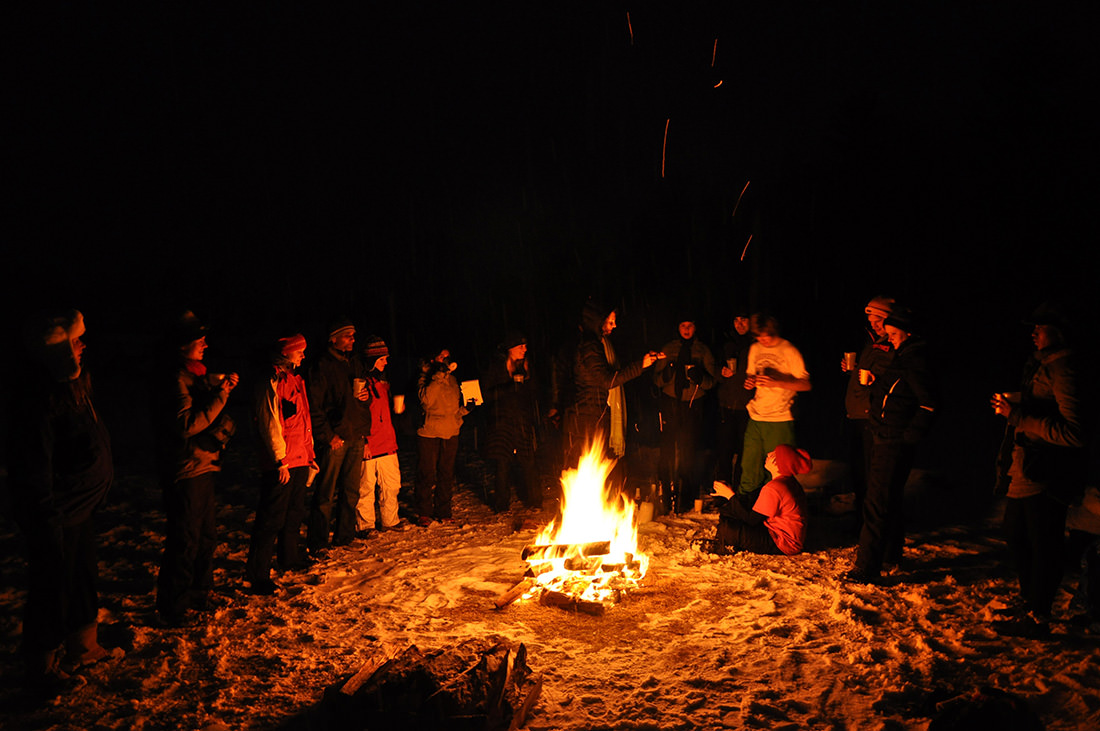
Gathering around the campfire with family and friends — a perfectly hyggelig experience for Mette Aamodt.
In her article “The Metaphysics of Time, Space, Spacetime and Slow Space,” published on theSlow Spaceblog, she discusses the difference between the two Greek concepts of time: kronos and kairos. Hygge is very much kairos, or quality time.
Some excerpts, edited for brevity:
“… Society has been evolving rapidly over the last 200 years, and mechanical technology helped people overcome their inherent slowness. The Digital Revolution of the twentieth century allowed us to move information instantaneously. Faster processing allowed for faster machines. Architecture continued its love-affair with technology. Computer-aided design, manufacturing and fabrication allowed architecture to overcome its inherent slowness and the speed was exhilarating. A prolific era of image-making and rapid building created ‘Starchitects’ whose iconic buildings were consumed worldwide in magazines and social media.
“The scarcity that exists today is time. Carl Honoré, author of In Praise of Slowness, writes, ‘All the things that bind us together and make life worth living – community, family, friendship – thrive on the one thing we never have enough of: time.’
“But not all time is the same. Actually, the Ancient Greeks had two different conceptions of time — chronos and kairos. Chronos refers to chronological or sequential time. Kairos refers to a moment of indeterminate length in which an event of significance happens. A good analogy for this is when the ball drops in Times Square on New Year’s Eve. Counting down — 10, 9, 8 — is chronos time: It is specific and measurable. But when the ball gets to zero, time switches to kairos. We cheer, toast, kiss one another and celebrate. No one is counting anymore. We are just living in the moment and enjoying the experience of being together.”
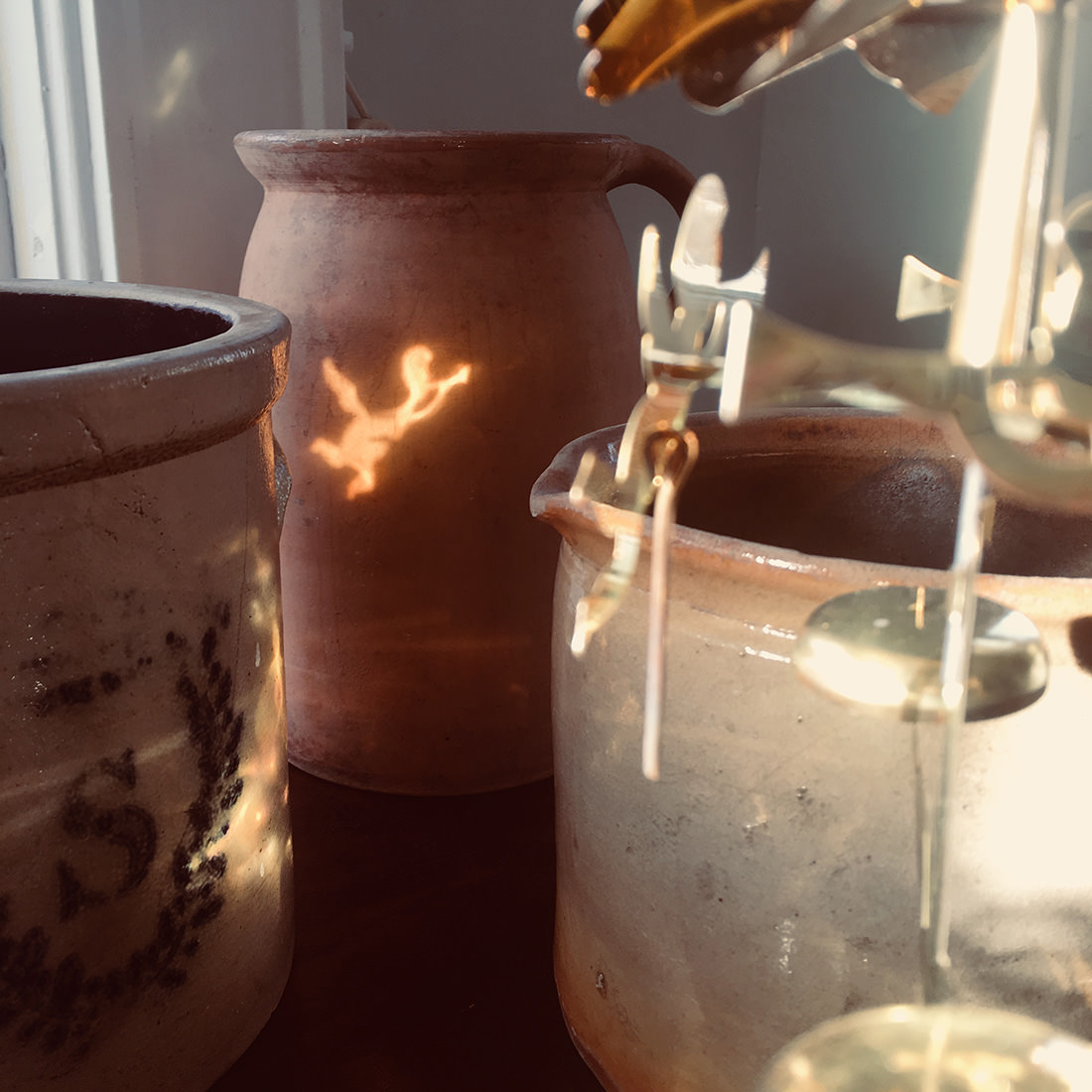
Hygge is noticing and appreciating tiny details, such as the whimsical play of light in your kitchen.
A conversation on hygge with Mette Aamodt
A / P: What’s your personal definition of hygge?
Mette: Hygge is a state of mind, an attitude, a feeling. The fundamentals of hygge are very connected to the idea of slowness. It’s not about the stuff, the blankets, the branded this and that. It’s definitely not a design style. It’s the opposite of that. It’s about enjoying the simple pleasures of life. It’s coziness. It’s feeling comfortable in your body and in your mind and in your space.
(Good reads: Visit the Slow Space blog to learn more about the Slow Space Movement Mette has initiated)
You have to create hygge from inside, and it comes out. Sometimes, things on the outside can trigger that hyggelig feeling — like when you have a cup of tea, and you take a deep breath, and you just enjoy. When the Norwegians go walking in the woods, they always bring chocolate with them. After you’ve been walking for a while, and you enjoy being in nature, which, of course, is part of the whole experience, then, when you’re ready for a break, you sit down on a tree stump, and you break out the chocolate and enjoy that moment. It’s appreciation.
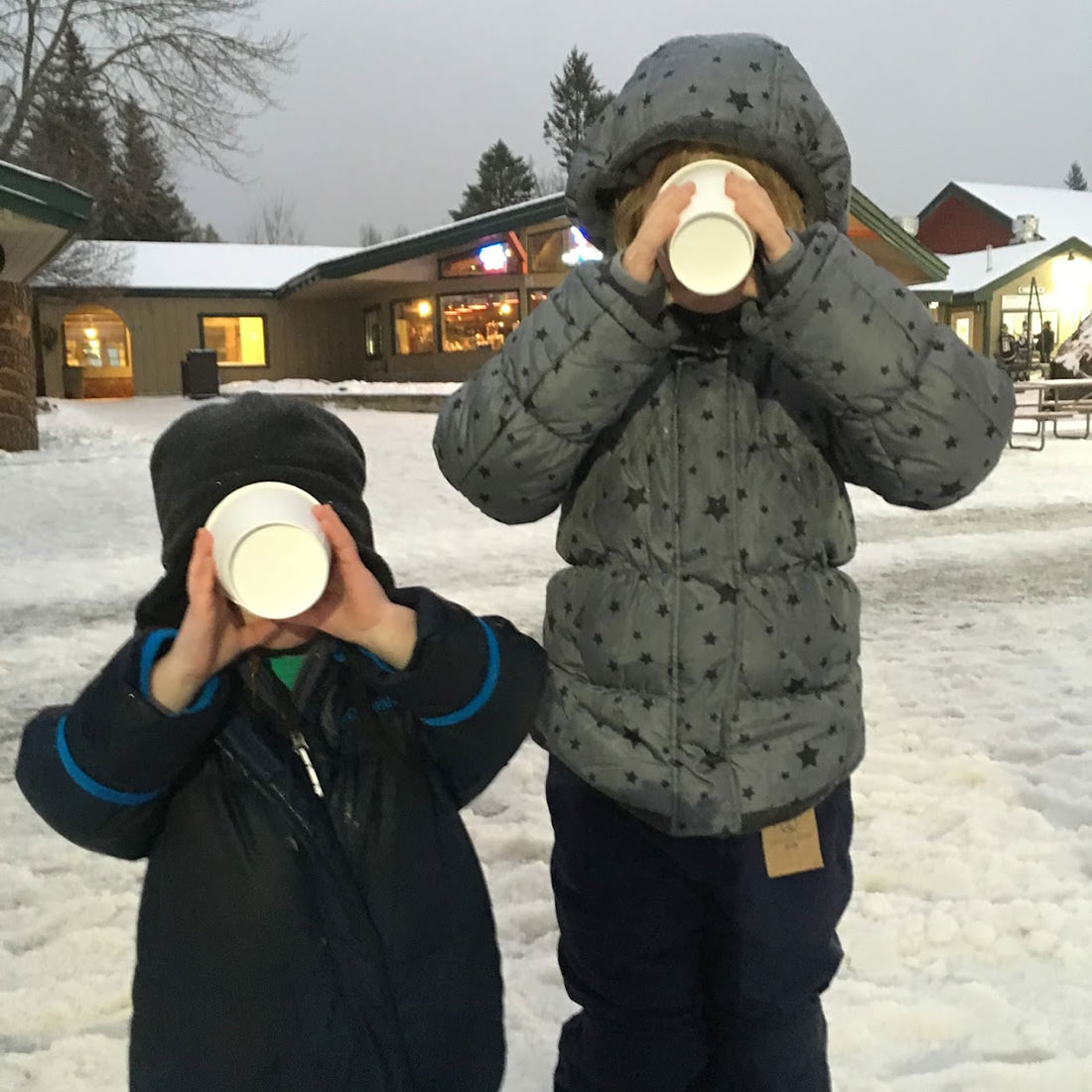
Hygge is a state of mind, an attitude, a feeling.
Name that feeling
A / P: Do we really need to adopt a Scandinavian word to describe a feeling?
Mette: It’s important to name feelings, so you can express them to someone else. Hygge is a very common expression in Norway. When you have a common name for something, it’s easier to share it. You need a word in order to share it.
You need a word in order to share it.
A / P: You were born in Norway and lived there until you were four. Do you remember how hygge came into your life?
Mette: Well, it’s just part of the Norwegian language. I wasn’t aware of that until I was older, and Norwegian friends were talking about it as a concept. They would say, ‘Nå skal vi hygge oss’ meaning ‘Now we will enjoy ourselves.’ When I look back, I see that it was the idea of it, and the feeling of it was always there, in everyday life.
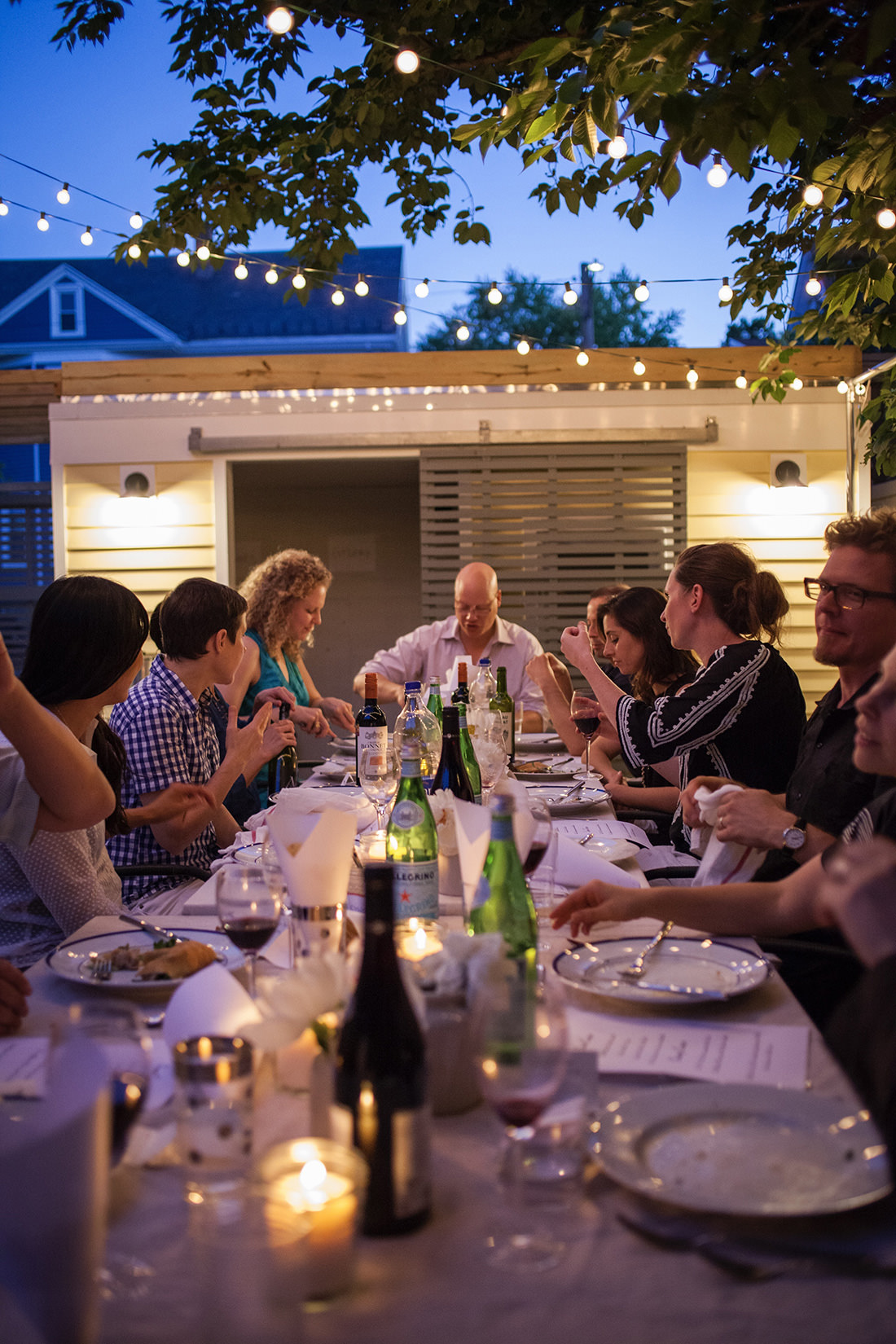
Hygge is celebrating the simple pleasures of life with friends: “Nå skal vi hygge oss” (Now we will enjoy ourselves). © Jane Messinger
A / P: Is hygge expressed differently in the United States than it is in Scandinavia?
Mette: Yes, because it’s not part of the American culture. It’s just a trend here, really. When I lived in Norway, it was just part of the way of life. A way to enjoy and appreciate what you have and make the most out of that. In the wintertime in Oslo, when there’s maybe three hours of very low sunlight, how do you make the most out of this sort of eternal darkness? You have to embrace it. The Norwegians are very good at that. You dim the lights and have lots of candles everywhere, and you have that nighttime feeling all the time and, actually, you look forward to it. It feels very comforting and warm and inviting.
A / P: Why do you think hygge resonates with people in the US and in other countries right now?
Mette: Something I read was talking about how we just need a little comfort now, especially because the hygge trend really started in the UK in 2016, the year of Trump and Brexit. You want to be able to think about the things that make you happy and that make you feel good. Many Nordic words influenced the English language and some say that hygge is the root of the word ‘hug’ because it has to do with comforting. Maybe we all just need a big hug right now.
Maybe we all just need a big hug right now.
Hygge is not materialistic. Hygge should be seen within the context of Scandinavian ideas of simplicity. And I think that is more appealing now to people than it used to be. The idea of slowness gets at the same core of appreciating the simple things in life, creating that sense of community and connection with other people. And comfort and wellbeing. I love the idea of wellbeing. So slowing down is another way of saying it.
A / P: Can you bring about hygge?
Mette: Yes, and you can and should cultivate that feeling. Have a dinner party with friends, with good food and conversation and it will happen. You create the environment and the situation for it. You are inviting it, and then it will come.
A / P: What’s a perfectly hyggelig experience for you?
Mette: Sitting around the campfire with my friends and family. There is something nice about being outside but also having the fire and being together in a small group.
Hyggelig by design
A / P: Put hygge in the context of architecture…
Mette: Hygge is about being present and enjoying whatever it is you are doing in the place you are doing it. Whatever you are eating and drinking, just breath and feel and eat. When you are in a space just pause and feel what it is like to be there. Is it comforting? That’s really what we want for our architecture. We want to create environments that encourage people to just be present and be in the moment… and to feel hygge again. There’s only so much we can do from the outside, but, still, certain environments do make you feel more comfortable, more relaxed, more at ease. The lighting is low, the colors are muted. We want people to have a space where they can really connect with one another, and they really feel like being together in a place.
Designing for the senses and designing with empathy is all part of it. Good architecture can encourage hygge. So focusing on space and the feeling of the space, the materials and bringing nature into the space… and awaken the five senses, so you can start to feel your body a little bit more, and maybe you can start to feel a little bit more present. That’s what we aspire to do.
It’s not about the style. It’s about the space and how it feels. And different people will respond to different materials and different types of spaces. There isn’t a formula, per se. But there are things that, in general, make people feel comfortable. And that has to do with, as much as possible, bringing in things from nature — through materials and by inviting in natural daylight through the windows and doors.
It’s not about the style. It’s about the space and how it feels.





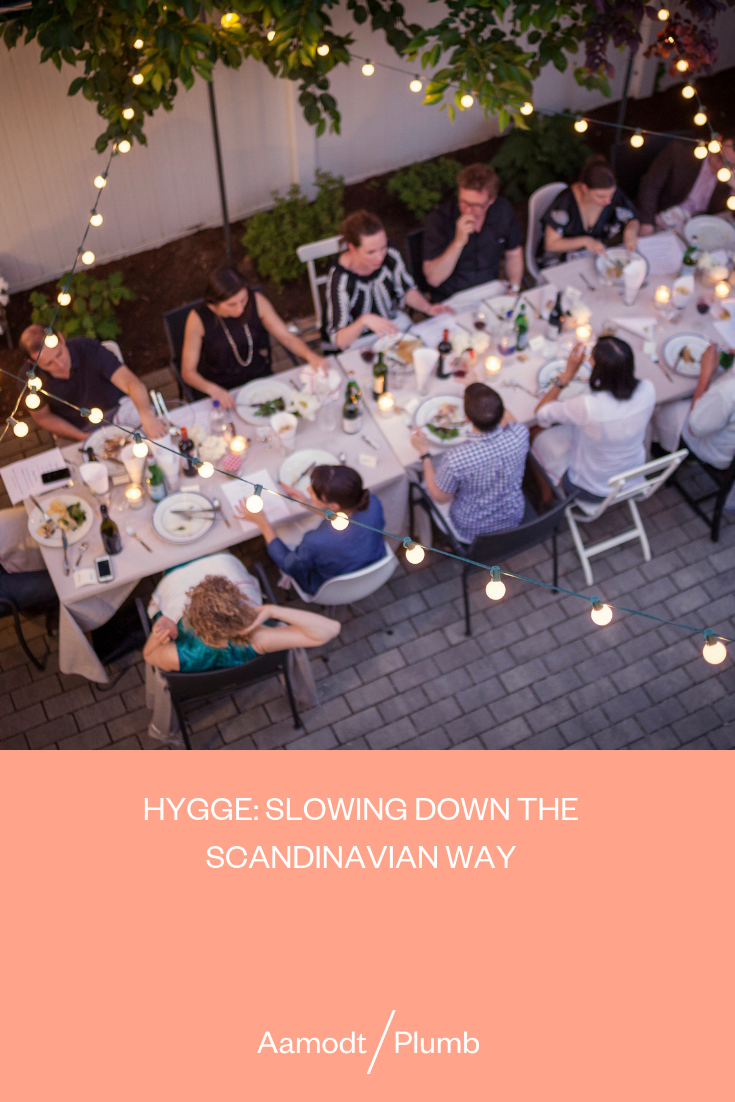
Susan
I love your reminiscences and how you create slowness and beauty in your own home, Mette. What are the pieces of paper on the outside table? Curious. My 15 years in Alaska were abundant with hygge.
Mette Aamodt
Susan, That photo was from my 40th birthday celebration. I think the pieces of paper may have been the menu? But I can’t remember!